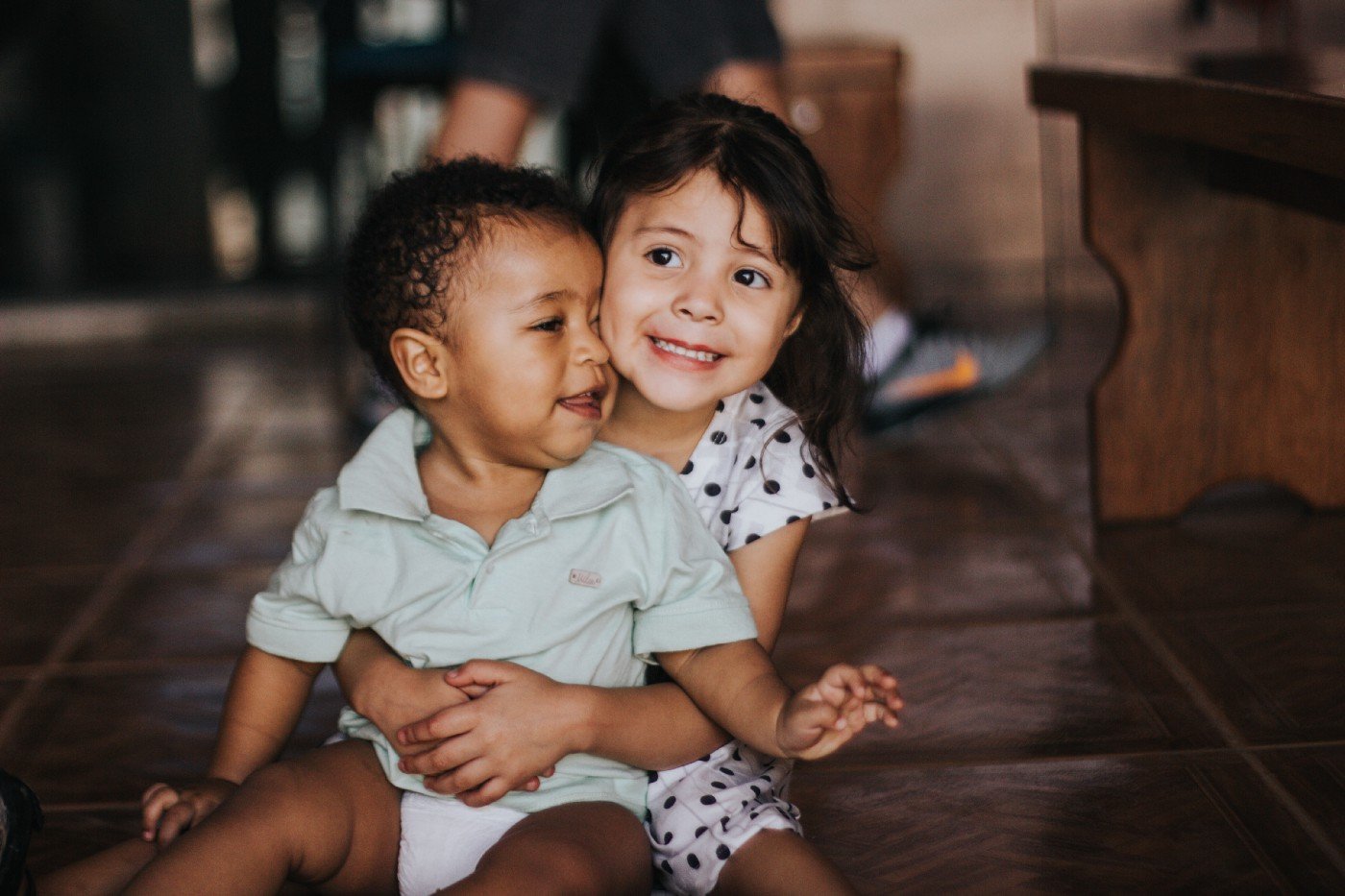6 Ways to Encourage Positive Identity In Kids

A 2019 study from Sesame Workshop, (the nonprofit educational organization behind beloved kids show Sesame Street) shows that most parents just don’t talk about identity with their kids. More specifically, over 60% of parents rarely or never discuss things like race and ethnicity or country of origin with their kids, and over half of parents rarely or never discuss gender.
Kids start to take notice of different identity factors at a very young age — and research shows that we often underestimate how early this recognition starts to take place. So, avoiding these conversations because we think our kids might be too young to start talking isn’t doing them any good. But there’s another big problem with avoiding talking about identity. According to Sesame Workshop, those parents that do talk to their kids about identity are also more likely to have dealt with a negative comment about their kids’ own identities.
It’s crucial to start talking about identity with kids in order to be proactive and start nurturing a positive sense of self early on. Research shows that having a positive identity is really important for kids’ development and relates to higher self-esteem.
Talking about identity is important not only to encourage a positive self-image, but it’s also an opportunity to teach kids to celebrate all of the ways that people are unique. Here’s how you can start nurturing a positive identity at home and teach your kids to value diversity at the same time:
1. Talk about your family’s heritage.
One of the best ways to start talking with your kids about identity is to ground these conversations in your own family’s identity. This will teach your kids more about your family’s background and encourage them to take pride in who they are. This can be as simple as sharing family stories with them, and taking some time to talk about your family’s heritage and values. Make a point to involve your kids in celebrating any holidays or annual rituals that are important to your family. Set aside time to cook traditional meals together — these don’t have to be old family recipes, you can find some new ones to try together!
2. Provide your kids with diverse media representations.
The books we read, the music we listen to, the movies we watch, and even the games we play can send messages to our kids about what (and whose) stories matter. Making sure that kids see people who look, sound, and feel like they do in the media they consume can have a huge impact on boosting their self esteem and providing them with positive role models In 2012, a survey of 3,600 children’s books revealed that 93% of them were about white people. In the near-decade since then, there have been lots of efforts to diversify media representation, but it’s a good idea to keep being mindful of this yourself. And keep in mind: all kids can benefit from having a diverse range of role models represented in the media, not just those who may have been underrepresented in the past.
3. Keep an open dialogue.
Making sure that our kids see plenty of diverse media representation may not be enough all on its own. These messages are strengthened when we follow up with meaningful discussion. Point out what you observe in what your kids read, watch and listen to and ask questions about what they notice. For example, does your child’s story book feature someone going against gender stereotypes? Take a moment to highlight this for them, and keep the conversation going!
4. Encourage them to discover what brings them joy.
Guide your kids in finding out what they like to wear, what they like to do, and who they’d like to be. Support them in what they discover, and emphasize that they have the choice to make these decisions, even (and especially) if their choices defy certain gender stereotypes or expectations. For example, if your son wants to paint his nails, or your daughter wants to play with trucks, make sure that you emphasize your support.
5. Focus on their strengths.
Highlighting your child’s strengths can go a long way towards encouraging a strong self esteem and a positive sense of identity. As you give your kids the space to explore their interests, offer them plenty of encouragement along the way. Acknowledge their talents, encourage them to spend time doing what they excel at, and focus on fostering their confidence.
6. Teach them to be allies.
As you’re teaching your kids to appreciate all of the wonderful, unique qualities that make them special, focus, too, on encouraging them to support their friends’ identities. Emphasize the importance of calling out harmful stereotypes if they notice them, and encourage your kids to stand up against bullying or any hateful comments or actions if they should ever see them occur. Walk your kids through how they could intervene and stand up against them.
Talking about identity gives you an incredible chance to encourage your kids to become respectful, accepting, and understanding young minds who are supportive of the ways that we are all unique — your kids included! These conversations can help your kids develop a strong, positive sense of self and value all of the things that make them who they are.
For more information about how to talk to kids about identity, check out maro parents.
Additional Sources:
“7 Ways to Connect Kids to Their Family Heritage” by Deborah Farmer Kris on PBS for parents. https://www.pbs.org/parents/thrive/7-ways-to-connect-kids-to-their-family-heritage
“Diversity in Children’s Media Provides Representation and Fosters Compassion” from Southwest Human Development. https://www.swhd.org/diversity-in-childrens-media-provides-representation-and-fosters-compassion/

